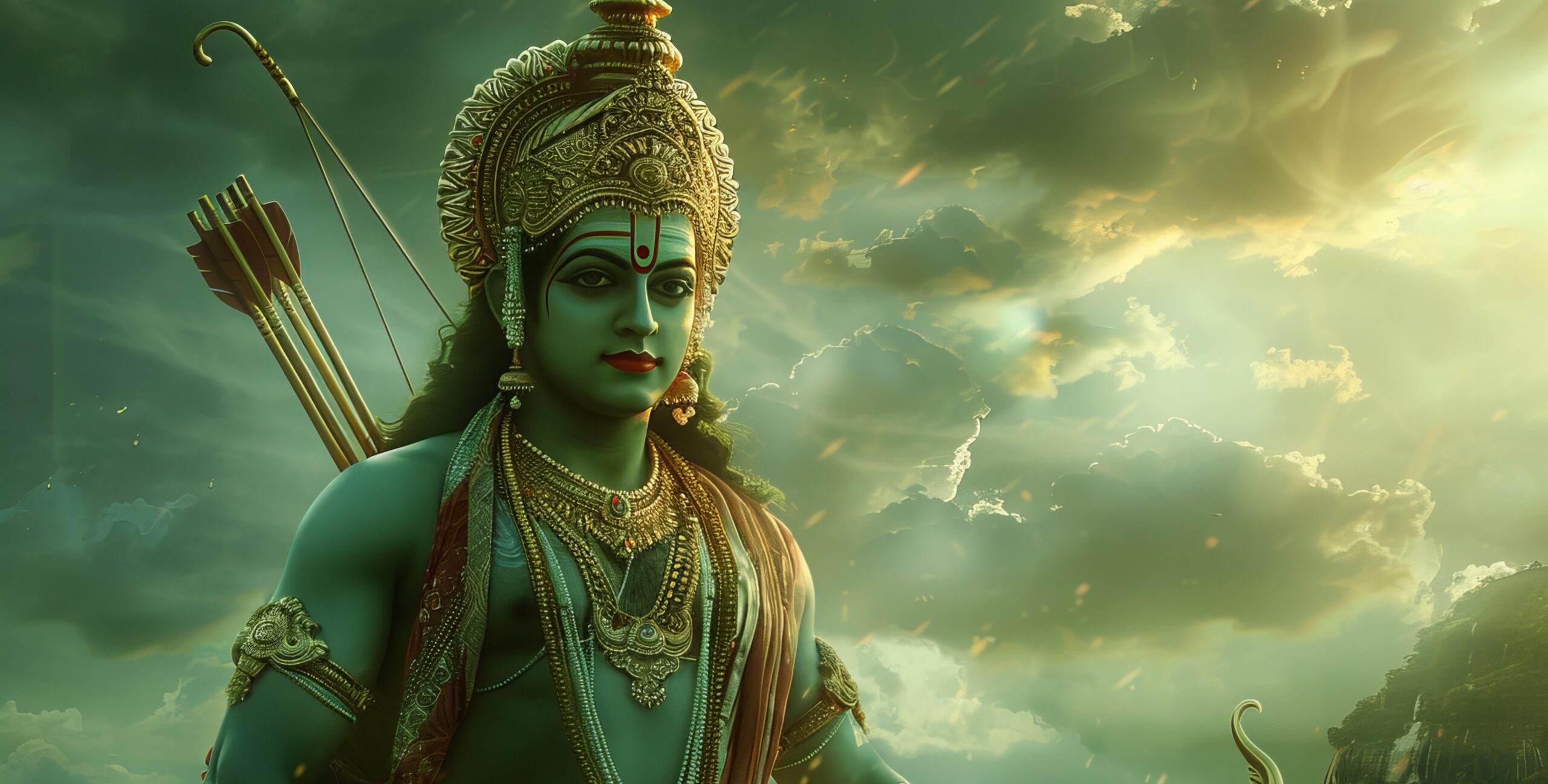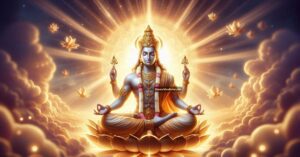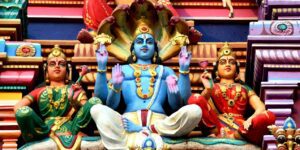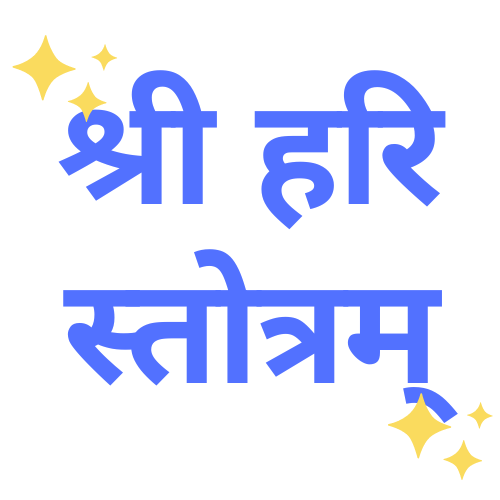When will Kalki born?
Kalki might take birth thousands of years from now. Maybe even lakhs of years! Don’t believe it? Read the entire article to know more. Checkout possible dates at the end of the article!
Cyclical Nature of Creation and Destruction
द्वादश्यां शुक्ल-पक्षस्य माधवे मासि माधवम्।
जातं ददृशतुः पुत्रं पितरौ हृष्ट-मानसौ।।
On the twelfth day of the waxing moon in the month of Madhava, the parents, filled with joy, witnessed the birth of their son, Madhava (Kalki).
शम्भल ग्राम मुख्यस्य ब्राह्मणस्य महात्मनः।
भवने विष्णुयशसः कल्किः प्रादुर्भविष्यति॥
Thereafter, at the conjunction of two Yugas, The Lord of the creation will take his birth as Kalki, And become the son of Vishnuyasha, At this time, the rulers of the earth will have degenerated into plunderers.
Hinduism envisions time as cyclical, marked by four yugas (ages): Satya Yuga, Treta Yuga, Dvapara Yuga, and Kali Yuga. Each yuga represents a gradual decline in morality, righteousness, and human virtue. The current age, Kali Yuga, is characterized by strife, discord, and moral decline. It is believed that at the end of this dark age, Kalki will descend to restore righteousness and usher in a new Satya Yuga.
Satya Yuga (The Golden Age): Characterized by purity, truth, and righteousness, this era represents a time of harmony and perfection.
Treta Yuga (The Silver Age): A slight decline from the pinnacle of Satya Yuga, this age witnesses a gradual decrease in dharma (righteousness).
Dvapara Yuga (The Bronze Age): Materialism begins to take hold, with a further decline in dharma.
Kali Yuga (The Iron Age): The current age, marked by darkness, ignorance, and immorality.
Understanding Manvantar
चतुर्दश मनवन्तराणि चतुर्दश च मनुष्याः।
एतैश्चतुर्दशभिः युगसहस्राणि कल्पः।।
Fourteen Manvantaras exist, each with a different Manu (progenitor of humanity). These fourteen Manvantaras together constitute a Kalpa (a cosmic day of Brahma).
चतुर्युगाणि चत्वारिंशत्सहस्राणि दैवानाम्।
एतैर्युगैः कलिर्युगं च समावस्थाप्य कल्पः।।
Four Yugas together last for forty thousand divine years. Including the Kali Yuga, this constitutes a Kalpa (a cosmic day of Brahma).
A Manvantar is a cosmic cycle in Hinduism, consisting of 71 Maha Yugas (each comprising the four yugas). Fourteen Manvantars make up a Kalpa, a day in the life of Brahma, the creator. Each Manvantar is ruled by a different Manu, who is the progenitor of humanity during that period. We are currently in the seventh Manvantar, which is presided over by Vaivasvata Manu.
Measurement of Time in Hinduism
Hinduism employs a unique system for measuring time. Each Yuga is assigned a specific duration, with each divine year equaling 360 human years. Here’s a simplified breakdown of the Yuga durations:
Satya Yuga: 4,800 divine years
Treta Yuga: 3,600 divine years
Dvapara Yuga: 2,400 divine years
Kali Yuga: 1,200 divine years
Hindu cosmology measures time on both vast and minute scales. A single day (Kalpa) in the life of Brahma lasts for 4.32 billion human years. Each Kalpa is divided into 14 Manvantars, each lasting 306.72 million years. Within each Manvantar, there are 71 Maha Yugas, and each Maha Yuga is composed of four yugas, totaling 4.32 million years. These expansive cycles underscore the grandeur and complexity of Hindu timekeeping.
The Arrival of Kali Yuga
कलौ चासीत् कलिकृतेन च मही क्षितिश्च सर्वतः।
दस्युयुक्ता भविष्यति सर्वे च राजानो दस्यवः।।
Towards the end of the Kali era, all people will be dastardly. They will oppose the Vedas, become robbers and will be concerned only with wealth. The disbelievers will then become kings and these kings will also become cannibals.
The sacred text Shrimad Bhagavatam states that Kali Yuga commenced after the departure of Lord Krishna from Earth. With Krishna’s absence, darkness flourished, paving the way for Kali Yuga.
Scriptures Reveal Clues about Kalki's Birth
Several scriptures offer details about Kalki’s birth:
• Kalki Purana: He will be born on the 12th day of the waxing moon in the month of Madhava.
• Agni Purana: He will be born as the son of Vishnuyasha, a Brahmin, and will eliminate the wicked rulers.
• Shrimad Bhagavatam: He will be born in the village of Shambhala to a pious Brahmin named Vishnuyasha.
The Kalki Purana describes the astrological conjunctions at the time of Kalki’s birth:
• Moon in Dhanishtha nakshatra (Aquarius): Indicating wealth and swift action.
• Sun in Swati nakshatra: The nakshatra of the sword.
• Jupiter in Purva Ashadha nakshatra (Sagittarius): Providing invincibility and early victory.
• Saturn exalted in Libra: Balancing justice and sword.
• Ketu in Scorpio: Suggesting descent atop a great white steed.
Kalki is prophesied to be born during the darkest period of Kali Yuga, bringing salvation and ending the age of vice. The Kalki Purana [1.2.15] predicts his birth on the 12th day of the waxing moon in the month of Madhav.
Possible Dates for Kalki's Birth
Predicting the exact date of Kalki’s birth is challenging due to the symbolic nature of these prophecies. Various interpretations suggest different timelines:
5000–6000 CE: Some astrologers and interpreters suggest that Kalki might appear within the next few thousand years based on the belief that significant events in the Kali Yuga occur at intervals.
432,000 CE: According to the traditional Hindu belief, Kalki will appear at the end of Kali Yuga, approximately 427,000 years from now.
21st Century: A few modern spiritual leaders have claimed that Kalki will or has already appeared in our current century, but these claims are not widely accepted.
The concept of Kalki offers a beacon of hope, an assurance that even in the darkest times, a force for good will emerge to restore balance. It’s a reminder that dharma ultimately prevails, and righteous conduct paves the way for a brighter future.









Krishna Ashtakam